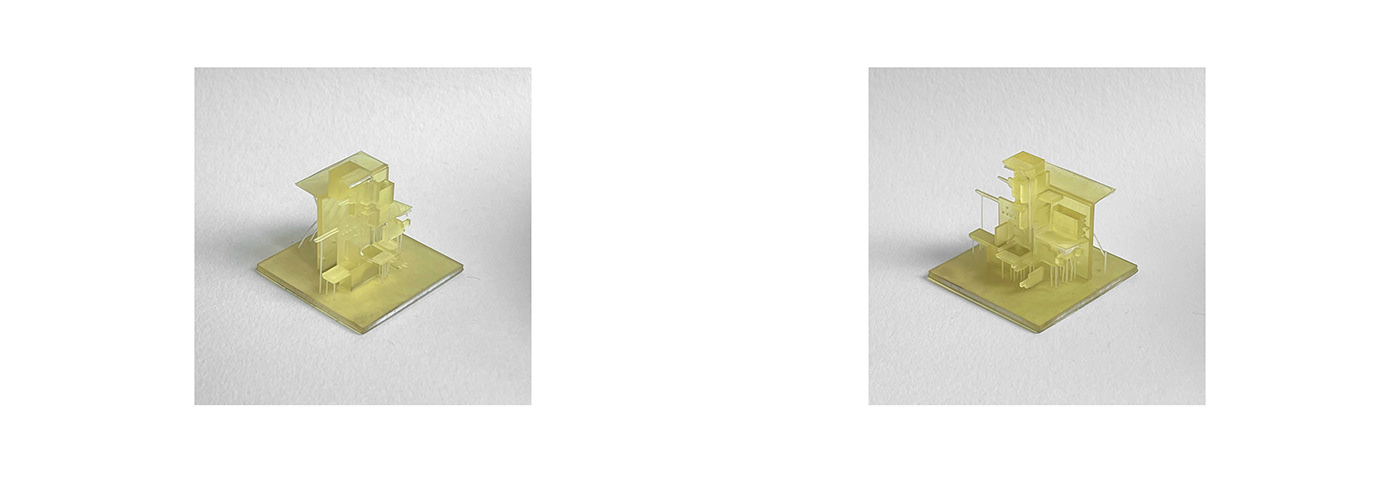SENSORY DIALOGUES
// Peter Zumthor, Pesoa von Elrichshausen //
For the 3D printed model that embodies the common methodology, a solid cubic form is multiplied, reflecting Peso von Ellrichshausen's penchant for simple, monolithic structures. A key feature is the deep sensory pathway carved from the top to the bottom of the model, reminiscent of Zumthor's deep spatial experiences. This section varies in width and direction, creating a rich and unpredictable sensory journey. The texture of the mockup mimics the feel of rough concrete or wood, evoking the raw and authentic materiality that both architects often use. Texture variations are included in the sensory pathway to stimulate the tactile experience. Tiny perforations are built into the walls, introducing an element of light play that changes with the viewer's perspective and ambient lighting conditions, similar to how Zumthor masterfully uses light in his buildings. This model is not just a representation of the building, but a distillation of a common methodology of sensory engagement, material expressiveness and spatial narrative in a compact, tactile form.





Literature:
Zumthor, P. (1998). Thinking Architecture.
Pezo, M., & Von Ellrichshausen, S. (2006). Pezo von Ellrichshausen: Naive Intention.
Holl, S., Pallasmaa, J., & Perez-Gomez, A. (2006). Questions of Perception: Phenomenology of Architecture. Von Ellrichshausen, M., & Pezo, S. (2007). Poli House.


